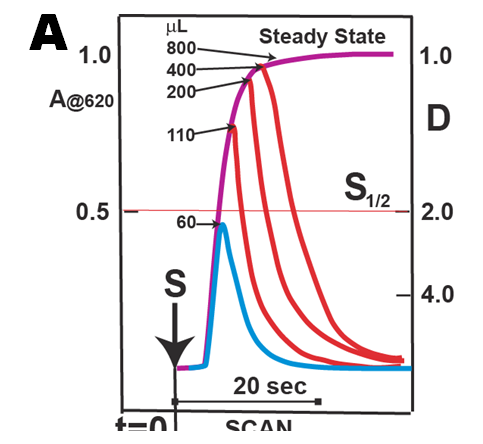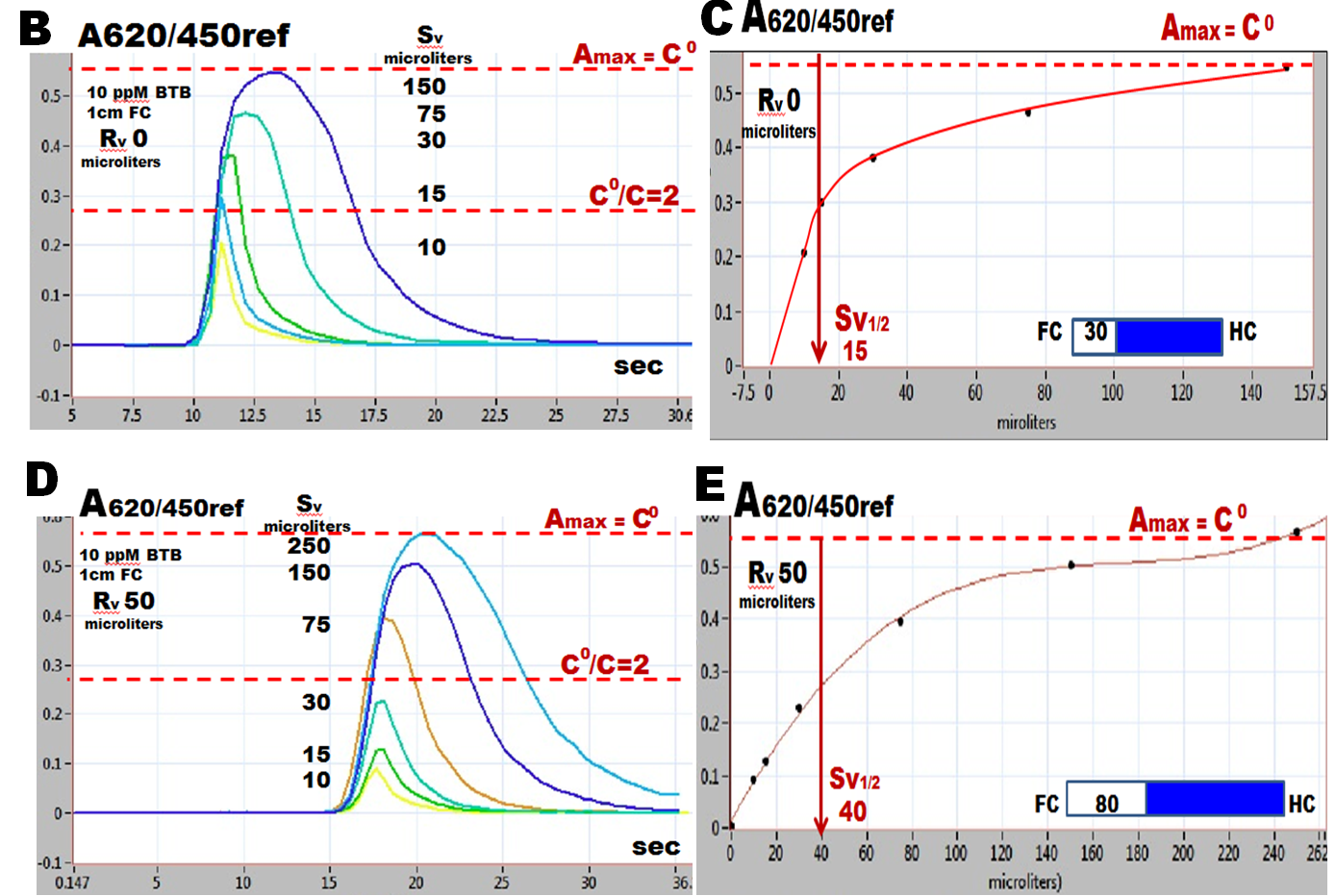Dispersion in a Single Line LOV
Sample Volume
2.2.6.A.
By injecting increasing volumes of dye into a Flow Injection (A) or Sequential Injection (B, D) manifold peaks are obtained, that approximate F and C curves, (Section 0.3.3.). The volume a dye, representing a sample, necessary to reach 50% of “steady state” is termed S1/2 Note that at least 5 S1/2 volumes are needed to reach a plateau, at which maximum absorbance Amax and the dispersion coefficient D= Co/C =1 is reached. At this “steady state” the channel between injection and detection, as well as the flow cell are filled with undiluted dye. Observe that the peak height increases linearly with the volume of injected dye, until the S1/2 value is reached, while higher sample volumes bring diminishing returns. Therefore reagent based assay will fail, when D approaches 1, since the reagent solution is entirely displaced by sample solution. Therefore it is advisable to adjust the volume of the injected sample to be at or below S1/2, to obtain desirable sensitivity, to minimize sample and reagent consumption and to remain within linear calibration range.

It should be noted that at dispersion ( D=2), when volume ratio of sample and surrounding solution is 1:1, the excess of reagent is safely maintained, since all reagent based assays use reagent concentration that are 20 to 100 times higher that of the most concentrated standard of the target analyte.
The S1/2 value is related to the combined volumes of the channel between the point of injection and the flow cell, and the volume of the flow cell. In the LOV module furnished with 1 cm flow cell the combined volumes are 30 microliters (10+20). Therefore the response curves obtained in this construction (B) yield, when plotted (C) S1/2 of 15 microliters.

Injecting 50 microliter sample zone, followed by 50 microliter of reagent, moves the sample zone further upstream and thus increases the volume trough which the sample has to travel to reach the flow cell, to 80 microliters (D). As a result, the S1/2 value increases to 40 microliters (E). This is why minimizing the volume of the channel between injector and detector is key to miniaturization of flow based analyzer, since it minimizes sample and reagent consumption and allows sample/reagent mixing ratios to be varied as needed, by changing the volumes of sample and reagents injected upstream into the holding coil.









